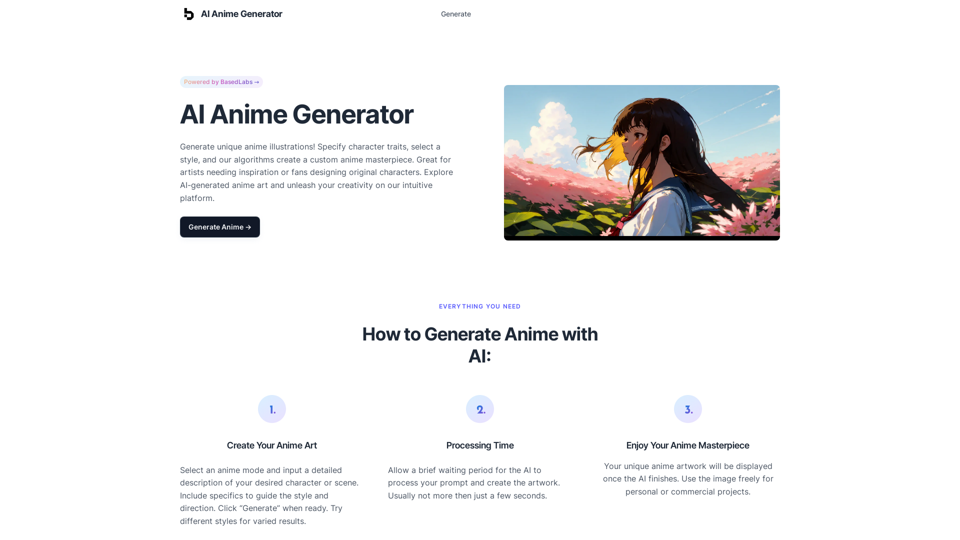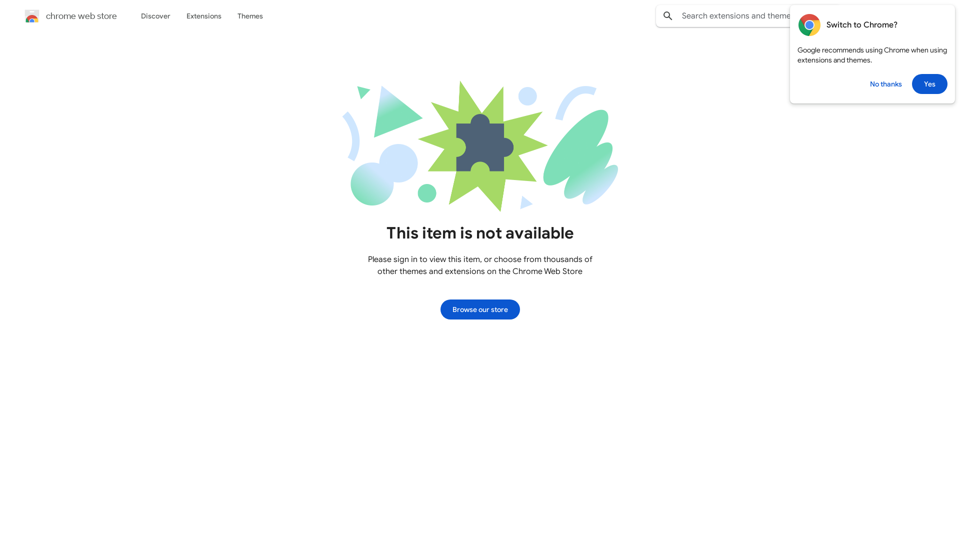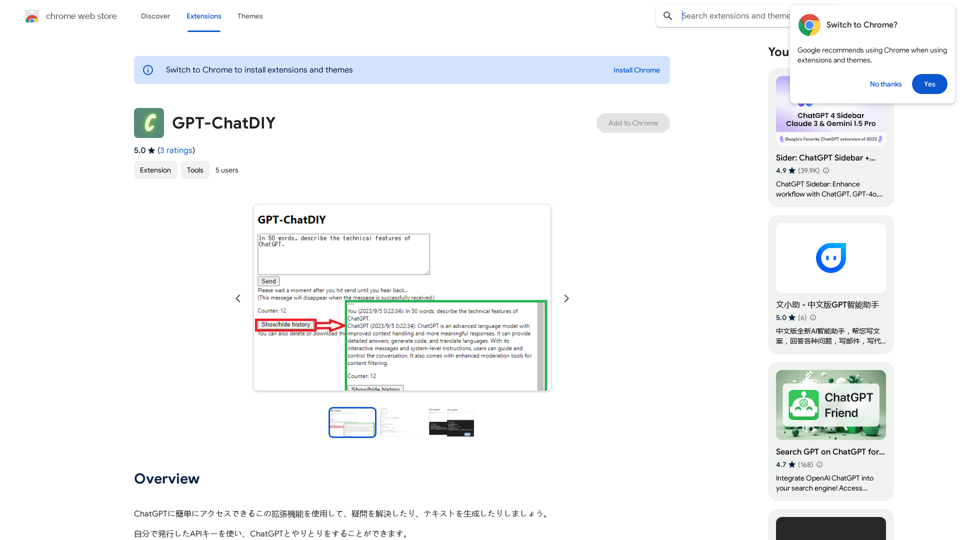Genspark is a comprehensive AI platform offering access to a wide range of AI technologies for various applications. It provides users with Sparkpages, innovative webpages featuring built-in AI copilots for interactive chatting and querying. The platform hosts over 1000 AI tools across 200+ categories, making it a versatile solution for text generation, image understanding, and document analysis.
Genspark Genspark is a technology company that provides AI-powered education and talent development solutions.
GenSpark
GenSpark is a training program that focuses on providing skills and knowledge to individuals in the field of software development, data science, and other related technologies. The program aims to bridge the gap between the skills possessed by the students and the requirements of the industry.

Introduction
Feature
Extensive AI Collection
- Over 1000 AI tools
- 200+ categories
- Nearly 200,000 AI models available
User-Friendly Discovery
- Easy-to-use interface for discovering AI tools
- Free AI tool submission
Flexible Usage Options
- Free usage limits for all users
- Subscription plans for extended access and benefits
Text-to-Image Generation
- Create images using AI technology
- Shared credits system with other AI tools
Privacy Protection
- User data not used for training purposes
- Option to delete account and remove all data
Versatile Applications
- Support for work, study, and everyday life tasks
- No subscription required for most AI models
FAQ
How do I get started with Genspark?
Sign up for a free account and start exploring the vast array of AI tools available on the platform.
What are the benefits of subscribing to Genspark?
Subscribing grants additional benefits such as:
- Extended access beyond free usage limits
- Access to premium AI tools
- Priority customer support
Is Genspark secure?
Yes, Genspark implements robust security measures to protect user data and takes privacy seriously.
Can I use Genspark for personal projects?
Absolutely. Genspark is designed for both personal and professional use, allowing you to utilize AI tools for various tasks and projects.
How can I maximize my use of Genspark's AI services?
- Explore the wide range of free AI tools available
- Utilize daily free uses to support various tasks
- Consider subscribing for heavy reliance on Genspark's AI services
When should I consider a Genspark subscription?
If free AI tools don't meet your needs and you heavily rely on Genspark's services, subscribing to affordable products is recommended for extended access and benefits.
Latest Traffic Insights
Monthly Visits
8.76 M
Bounce Rate
38.54%
Pages Per Visit
5.35
Time on Site(s)
461.43
Global Rank
5646
Country Rank
Japan 1257
Recent Visits
Traffic Sources
- Social Media:0.70%
- Paid Referrals:0.23%
- Email:0.02%
- Referrals:3.20%
- Search Engines:34.20%
- Direct:61.65%
Related Websites

Effortlessly apply to jobs with a single click. Canyon automatically fills out job applications and creates resumes for you.
193.90 M
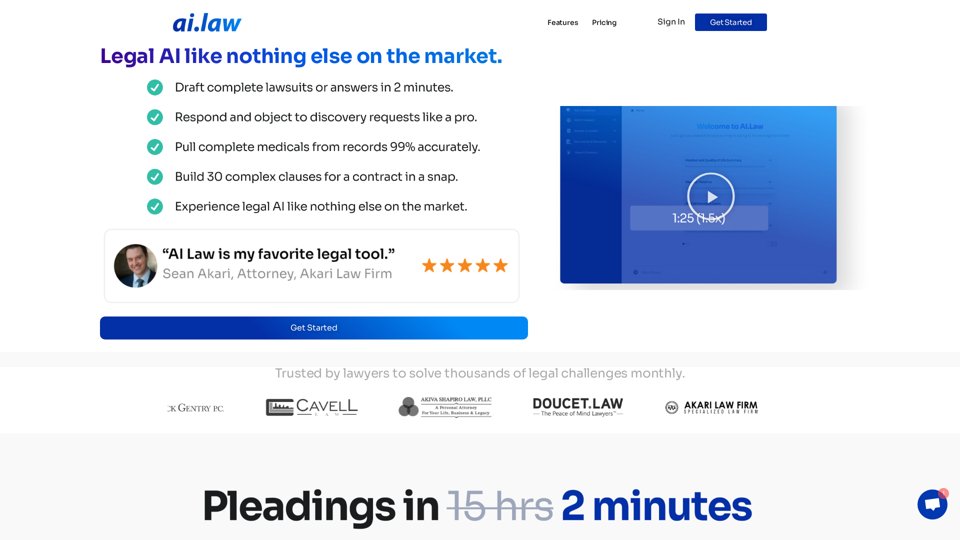
SEO2 - Legal AI Like Nothing Else on the Market. - AI.Law - ai.law
SEO2 - Legal AI Like Nothing Else on the Market. - AI.Law - ai.lawLegal AI like nothing else on the market. Get Started “>”>Trusted by lawyers to solve thousands of legal challenges monthly. AI Law provides you with top-quality legal work without the hassle. No more drafting from scratch—just high-quality results. Complaint Drafting Draft pleadings without the hassle of hours of research. AI Law will assemble a complete lawsuit […]
15.50 K
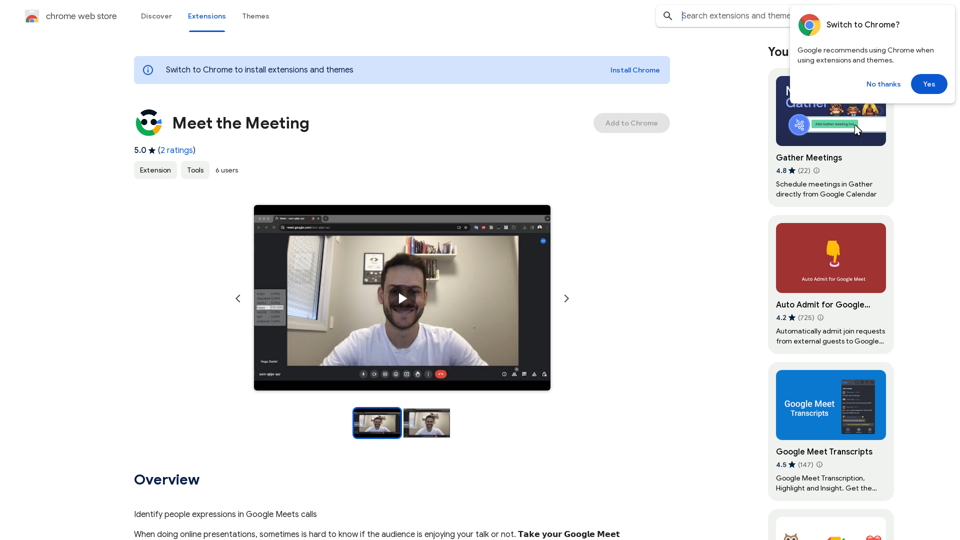
Identifying People Expressions in Google Meets Calls This is a complex task with several challenges: * Technical Limitations: Google Meets doesn't currently offer an API to directly access facial expressions of participants. * Privacy Concerns: Analyzing facial expressions raises significant privacy issues. Users should have control over whether their expressions are being tracked and used. * Accuracy: Even with access to facial data, accurately interpreting expressions can be difficult due to variations in lighting, angles, and individual differences. Possible Approaches (with limitations): * User-Submitted Data: Participants could manually indicate their emotions during the call, which could be collected and analyzed. This relies on user honesty and may not capture subtle expressions. * Third-Party Tools: Some external tools might analyze video feeds and attempt to detect expressions. However, their accuracy and privacy practices should be carefully evaluated. * Future Developments: Google or other companies might develop features that allow for more ethical and accurate expression analysis in the future. It's important to remember that facial expressions are just one aspect of communication, and relying solely on them can be misleading.
193.90 M
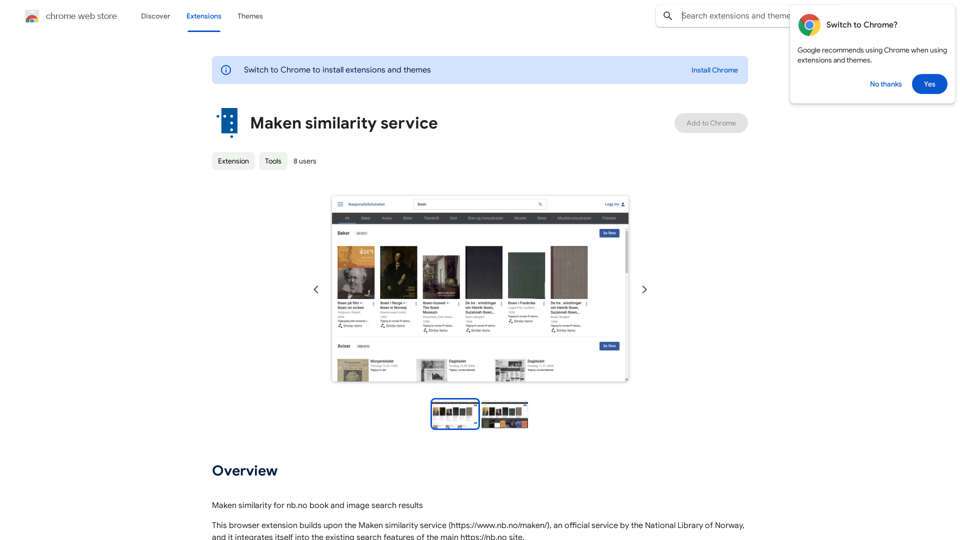
Comparing Similarity for nb.no Book and Image Search Results Let's explore how to measure the similarity between: * Book search results from nb.no (the Norwegian National Library) * Image search results from various sources This comparison can be valuable for understanding: * How well visual representations match textual descriptions. * Potential for using images to enhance book discovery. * Developing new search functionalities that combine text and image data. We can use various techniques to assess similarity, including: * Textual Similarity: Analyzing the keywords, topics, and overall content of book descriptions and image captions. * Visual Similarity: Comparing the visual features of images using algorithms like convolutional neural networks (CNNs). * Hybrid Approaches: Combining textual and visual similarity measures for a more comprehensive evaluation. By comparing similarity scores across different methods, we can gain insights into the strengths and weaknesses of each approach and identify the most effective way to connect books and images.
193.90 M
